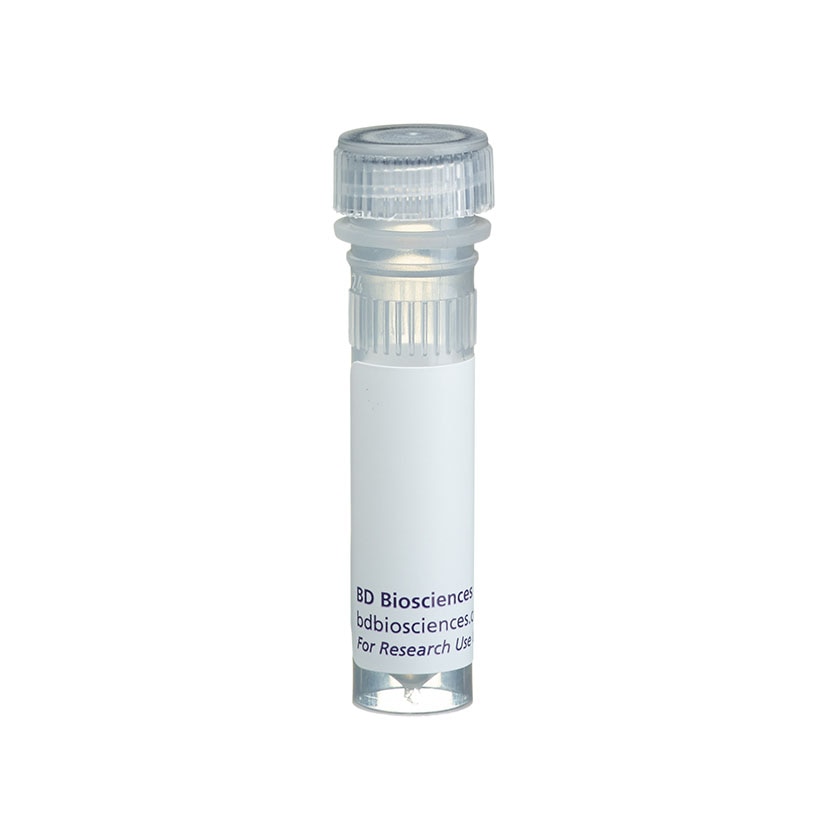-
Reagents
- Flow Cytometry Reagents
-
Western Blotting and Molecular Reagents
- Immunoassay Reagents
-
Single-Cell Multiomics Reagents
- BD® OMICS-Guard Sample Preservation Buffer
- BD® AbSeq Assay
- BD® Single-Cell Multiplexing Kit
- BD Rhapsody™ ATAC-Seq Assays
- BD Rhapsody™ Whole Transcriptome Analysis (WTA) Amplification Kit
- BD Rhapsody™ TCR/BCR Next Multiomic Assays
- BD Rhapsody™ Targeted mRNA Kits
- BD Rhapsody™ Accessory Kits
- BD® OMICS-One Protein Panels
- BD OMICS-One™ WTA Next Assay
-
Functional Assays
-
Microscopy and Imaging Reagents
-
Cell Preparation and Separation Reagents
Old Browser
This page has been recently translated and is available in French now.
Looks like you're visiting us from {countryName}.
Would you like to stay on the current location site or be switched to your location?
BD Pharmingen™ Biotin Rat Anti-Human IL-7
Clone BVD10-11C10 (RUO)


Regulatory Status Legend
Any use of products other than the permitted use without the express written authorization of Becton, Dickinson and Company is strictly prohibited.
Preparation And Storage
Product Notices
- Since applications vary, each investigator should titrate the reagent to obtain optimal results.
- Caution: Sodium azide yields highly toxic hydrazoic acid under acidic conditions. Dilute azide compounds in running water before discarding to avoid accumulation of potentially explosive deposits in plumbing.
- Please refer to www.bdbiosciences.com/us/s/resources for technical protocols.
Companion Products


Biotin Rat Anti-Human IL-7 antibody (clone BVD10-11C10) reacts with human interleukin-7 (IL-7). This antibody can be useful as a detection antibody for sandwich ELISA measuring human IL-7 protein levels. Biotin Rat Anti-Human IL-7 antibody (clone BVD10-11C10) can be paired with Purified Rat Anti-Human IL-7 antibody (clone BVD10-40F6; Cat. No. 554493) as the capture antibody along with recombinant human IL-7 (Cat. No. 554608) as the standard. Investigators are advised to titrate to determine optimal usage concentrations (ELISA), with a suggested range of 2 ug/mL to 0.5 ug/mL for Biotin Rat Anti-Human IL-7 antibody (clone BVD10-11C10). To obtain linear standard curves, doubling dilutions of human IL-7 ranging from ~2,000 to 15 pg/mL are recommended for inclusion in each ELISA plate. This ELISA pairing has been reported to demonstrate limited to no cross-reactivity with the following cytokines: Mouse IL-1β, IL-2, IL-3, IL-4, IL-5, IL-6, IL-7, IL-9, IL-10, IL-12 p70, IL-15, GM-CSF, IFN-γ, MCP-1, TCA-3, TNF or Human IL-1α, IL-1β, IL-2, IL-3, IL-4, IL-5, IL-6, IL-8, IL- 9, IL-10, IL-11, IL-12 p70, IL-12 p40, IL-13, IL-15, G-CSF, GM-CSF, IFN-γ, lymphotactin, MCP-1, MCP-2, MIP-1α, MIP-1β, NT-3, PDGF-AA, sCD23 , SCF, TNF, LT-α, VEGF; rat IL-2, IL-4, IL-6, IL-10, GM-CSF, IFN-γ, TNF.
Development References (2)
-
Abrams J. Immunoenzymetric assay of mouse and human cytokines using NIP-labeled anti-cytokine antibodies. Curr Protoc Immunol. 2001; 1:6.20-6.21. (Biology: ELISA). View Reference
-
Abrams JS, Roncarolo MG, Yssel H, Andersson U, Gleich GJ, Silver JE. Strategies of anti-cytokine monoclonal antibody development: immunoassay of IL-10 and IL-5 in clinical samples. Immunol Rev. 1992; 127:5-24. (Biology: ELISA). View Reference
Please refer to Support Documents for Quality Certificates
Global - Refer to manufacturer's instructions for use and related User Manuals and Technical data sheets before using this products as described
Comparisons, where applicable, are made against older BD Technology, manual methods or are general performance claims. Comparisons are not made against non-BD technologies, unless otherwise noted.
For Research Use Only. Not for use in diagnostic or therapeutic procedures.